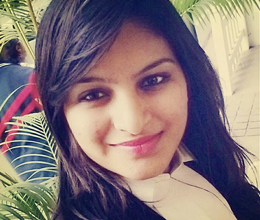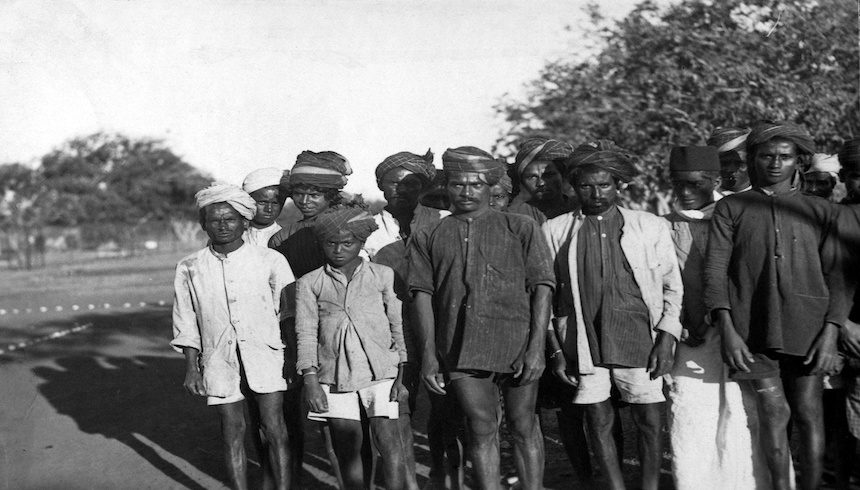Caste System in India
‘The value of a man is reduced to a vote, to a number, a thing – Rohith Vemula’
History of Caste System in India:
Have you ever thought of how human beings were classified into different castes? Even wondered how it originated and why it is so ironclad that the society refuses to bid farewell to something that is man-made? Isn’t it only natural that human beings are all equal and should be treated uniformly? Yet, why did we need our Constitution to bind upon us the need to treat everyone equally without any discrimination on the basis of caste, creed, religion?
There are various theories as to how caste system was born. The traditional theory is that according to Rig Veda, an ancient character called ‘Purusha’, which means the ‘cosmic being,’ destroyed himself to create the human society. ‘Varnas,’ which means ‘classes’ were created from different parts of his body with Brahmans created from his head, Kshatriyas from his hands, Vaishyas from his thighs and Shudras from his feet. All these classes were set to have certain inherent qualities who, mingled only among themselves and had different occupations.
Historically, it is also said that the caste system began even before written history with the arrival of Aryans around 1000 BC. They were fair skinned people and had started conquering places in North India. The Aryans had grouped themselves into 3 groups and the classes had a political tussle among themselves for leadership. Among the groups, Mahars were outcasted as they were dark skinned. Therefore, it is still said that Varna is more about color and less about class or status. Aryans either integrated the communities that existed in India before their arrival in the Shudra class or outcasted them.
The ones who were considered to be working under polluting professions were outcasted. For instance, people working as sweepers, cleaners, rag pickers or professions that brought them close to sweat, urine or feces of human beings. Therefore, they became the untouchables and were not allowed to enter temples, schools, wells or other public places.
Caste system became ineradicable with the Laws of Manu made in the 3rd century A.D., which preached caste system and sustained the inviolability of ranking of people. The untouchables came to be known as ‘Dalits’ meaning ‘oppressed’ or ‘broken.’ At present, Dalits make up to 16% of the Indian population with majority of them living below poverty line having no access to basic facilities. Most of them are landless agricultural laborers.
The caste system was incapacitated to a considerable extent during the British Raj. They brought in a casteless system and introduced Uniform Civil Code prescribing same punishment for all. Until then, punishment was given on the basis of caste instead of gravity of offense. British also introduced industrialization bringing about urbanization, which led to dwindling of caste system as occupational discrimination reduced and Shudras got an opportunity to change their traditional occupation.
Yet, British tried to understand the caste system as they felt it would be easier for them to classify people on the basis of their ability, occupation, intelligence etc. thereby making optimum use of people. However, due to its complexities, British began mixing caste with race and provided privileges to people on the basis of caste. For instance, Brahmins were given the opportunity of having British education while the others were not. This way, caste soon lost religious rationale and it became more about status and economic well-being. All in all, even though the British did their part to eradicate caste system lawfully in India, it survived within the communities.
Though we would want to believe that, centuries down the line we have washed our hands clean of such atrocities against human kind. Unfortunately, the reality is not so fair. People follow caste system adamantly to this date. Although, it is of lot less significance as with development and occupational changes, it became impossible for people of different castes to not come in contact. Therefore, fortunately caste became of no relevance when it came to business and wealthiest people today belong to a lower caste. In fact our very own Prime Minister, Sri Narendra Modi belongs to a backward caste.
However, caste identity is of great significance especially with respect to marriages. According to a survey conducted only 11% of the women in India marry outside their caste. In fact, we don’t need a survey to tell us how pervasive the practice of caste system is.
Even as a person who is largely unaware of caste system, when it comes to marriages, it is always heard that person of same caste is a must in majority of the families. It is during times like this that many understand the gravity of caste system and the rigidity with which families believe in classification of communities. It is more endemic than most people would ever know, arising from an unbelievable whirlwind of beliefs.
Rohit Vemula’s death and its implications on the caste system in India:
A certain heart-wrenching incident occurred out of the same whirlwind recently. It was sort of a wake-up call for those who were oblivious to caste system. Dalit scholar, Rohith Vemula’s exemplary suicide note brings to the forefront the malevolence of a caste-ridden society.
Rohit Vemula was part of a protest against disruption of the screening of a film based on the Muzaffarnagar’s riots at Delhi University. However, it is reported that the screening was disrupted in order push the atrocities on minorities behind the shadow of the darkness. His University then followed it with his suspension over an alleged assault on a fellow student that wasn’t proved beyond doubt. It is also said that Union Minister, Bandaru Dattatreya’s letter to Human Resource Development Minister, Smriti Irani calling the institution ‘casteist, extremist and anti-national’ dejected him even more.
Eccentrically, he sums up how a man is reduced to merely a vote, a number, a thing. He refuses to be marked with the identity of a particular caste holding him back from achieving what he wanted. He desolately points his birth as ‘fatal accident’ thrusted with a caste that overshadowed all his achievements, his childhood, his troubles.
He and his friends who are all members of Ambedkar Students’ Association (ASA) protested against the false charges against them and the unjust confinement. They termed it as social boycott and took shelter in a tent, they called as ‘Dalit ghetto.’ Three days after he was confined, Rohit had hung himself to death at his friend’s hostel room. Students of the University have pointed out time and again instances of caste bias that is undertaken in the campus.
However, ABVP (Akhil Bharathi Vidyarthi Parishad) leader Mr.Susheel Kumar who had suspended the students is of the opinion that proper investigation must be conducted as while there might be caste discrimination in the campus, Rohith and his friends had been suspended after their anti-national slogans on Yakub Memon’s execution and not because of their caste.
With regard to this, BJP Government is being criticized for not doing anything for the betterment of the Dalits, instead allowing such instances of caste discrimination in campuses leading to students’ death. Nevertheless, BJP Spokesperson Siddharth Nath Singh disagrees with this view pointing that the Government has come up with various schemes for Dalits and have also taken up steps to prevent manual scavenging. This incident is a result of an already existing problem in Hyderabad University.
Conclusion: What can be done to tackle the menace of caste system:
Even though Prime Minister Modi has condoled the death of Rohith. If Rohith’s suicide was really a result of circumstances deliberately orchestrated by the government, then strict actions must be taken against those who are responsible for it. Whatever it may be, we shall never know if the government really had a hand in Rohith’s death. However, what we do know is that there is some sort of caste discrimination making the rounds in the Hyderabad University that has precipitated to over nine Dalit students’ deaths in the last ten years.
In order to tackle with disparities made between backwards castes and others, Indian Constitution prevents discrimination on the basis of religion, race, caste, gender, and place of birth under Article 15. However, there are privileges given to SCs, STs and OBCs in the form of reservations against which criticisms have been drawn as Dr. B.R.Ambedkar had initially envisaged reservation for only ten years, yet it continues till date.
While I do believe that reservation was certainly inevitable in the absence of which people belonging to backward classes would never find a channel to come into the mainstream. Having said that, at this point in time caste reservation needs to be remodelled a little. For instance, after so many years, there are definitely some SC/ST who form the creamy layer, such people should be removed and the SC/STs that have been marginalized all these years should be benefitted. Also, the benefits should be discontinued after a few years so that other families get a chance of enjoying the benefits. Regardless of all this, there also needs to be a conscious effort to not politicize caste reservation
Picture Courtesy: Wikimedia








There Are 2 Comments